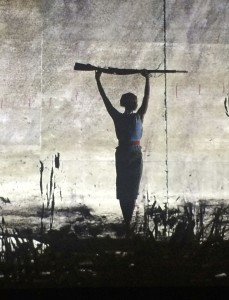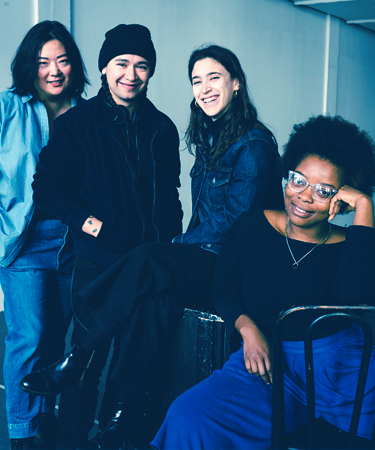March 23, 2016
Lyman Hall, Room 211
Fabulation and Futurity in the Anarchive
Alanna Thain, Associate Professor, English and World Cinemas, Director, Institute for Gender, Sexuality and Feminist Studies and the Moving Image Research Laboratory, at McGill University presented a graduate colloquium talk in TAPS.
[In recent years, South African artist William Kentridge has been experimenting with the creation of dynamic monuments in audio-visual forms, and the work of dance and the figure of the dancer is playing an increasingly important role in his explorations of the complex legacies of post-colonial and post-apartheid history and memory. In What is Philosophy? Deleuze and Guattari write that “a monument does not commemorate or celebrate something that happened but confides to the ear of the future the persistent sensations that embody the event”, ultimately deciding that “the monument’s action is not memory but fabulation”. Recently, Kentridge’s monumental works have been marked by two related concerns, where South Africa’s traumatic past participates in fabulation as documentary practice. Firstly, through the production of “diagrammatic artifacts”, ambiguous modes of embodiment ranging from tapestries that re-collage maps and bodies, “shadow processions” both still sculptures and in films animating these with light and music, and installation work articulating machines and moving images.
Secondly, Kentridge has directly engaged dance as a historio-graphic technique of “fabulation” as an anarchival and generative future function. Kentridge’s own work has moved towards dance for years, from his own somatic practice of creation as “stalking the drawing” to collaborations and compositions which move dance transversally across performing bodies, including his own, both human and non-human. His most recent installation, More Sweetly Play the Dance (2015), builds on his long-term collaboration with dancer and choreographer Dada Masilo; indeed, both works take up different perspectives on each artists’ work on dance of death, for Kentridge the processional and the danse macabre, for Masilo, her experimental reworkings of classical ballet, such as her queer remix of Swan Lake. What is the work of dance within these audio-visual matrices that complexifies the possibility of representation in an ethico-aesthetical way?



